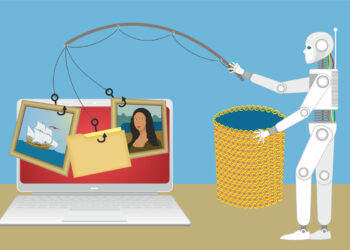
- Image via CrunchBase
Oh, the irony of it all! I had a draft post saved for weeks on this topic. Then, in a fit of New Year’s housekeeping, I deleted it. After all, it had lingered in my drafts folder for weeks.
Then Scott Karp at Publishing 2.0 published a post on the economics of publishing, and I ended up kicking myself. I would have to recreate my draft post all over again!
Here goes nothing.
One of Scott’s many good points is that publishers have mistaken loss of revenues from delivery mechanisms as loss of interest in content. So, if you’re not selling newspapers, you think people don’t care about the news. For publishers, if you’re not selling journal subscriptions, you might think people don’t care about scientific research findings.
This kind of mistake leads to very wrong conclusions and strategies.
It points to the fact that publishers are only left with 1/3 of what they once had to monetize — content, finished goods (print journals), and distribution.
When print and distribution were the coin of the realm, publishers could charge for pushing a finished good through a delivery system. Regular delivery of a set amount of content made revenues predictable, but also created an illusion that everything we sent contributed to the value we generated. We could have a lot of waste — useless articles, obscure research, quirky features — and it would still contribute to the overall business. And to the perception that we were making good decisions.
Not anymore.
We’re going to have to innovate. As Karp puts it:
New business models for media require entirely new exchanges of value — it’s not about finding new ways to balance the old equation.
That is the challenge facing publishers with an audience that still values scholarly research but now has (and seeks) new ways of acquiring it.
Michael Bhaskar at the digitalist.net writes lucidly about the classic comparison of an industry adrift (railroads) and one that embraced drift (Nintendo, with its focus on games, which has sustained it for 100+ years). Nintendo has thrived for so long because it embraced games, re-engineering itself time and again as new ways of making and selling games emerged:
The question, then, for 2009 is how publishers can effectively steer the line between being a railway and being a Wii. Between myopic decline and radical re-engineering. It means doing this in a dire economic climate, with limited resources, managing what we do best with what we’ve not done before.
I personally believe that finding the core value of scholarly publishing is vital if we’re going to transform successfully in this environment of change and challenges. The railroads got it wrong. Nintendo has gotten it right.
Let’s try it the Nintendo way.
Discussion
1 Thought on "Radical Reinvention — Wii!!"
“For publishers, if you’re not selling journal subscriptions, you might think people don’t care about scientific research findings.”
You’d be a fool to think that – subs are down all over but access is massively increased and the number of accesses massively increases each year. There’s huge interest – the issue as you point out is how to monetise it.
But the ‘waste’ still contributes to revenue, at least where I work and I’m sure at a lot of other places too. Look at the Emerald issue – they were charging effectively twice for the same articles. We charge for access to content even if it’s not used. Until libraries pay according to usage, not just according to content delivered, this won’t change.
![Reblog this post [with Zemanta]](http://img.zemanta.com/reblog_e.png?x-id=ff80eda5-c53d-44f4-a5c7-29412edaa4b1)


